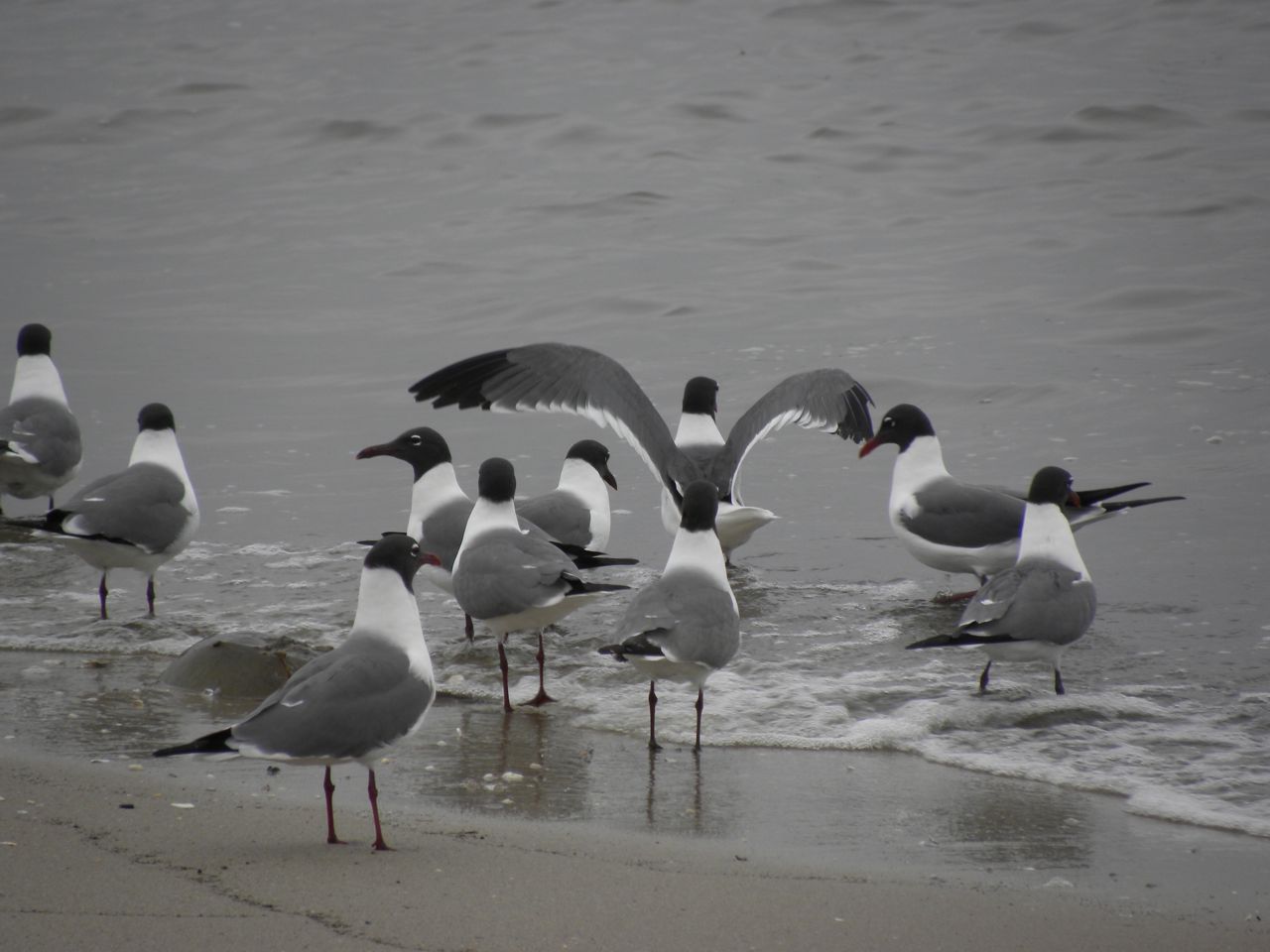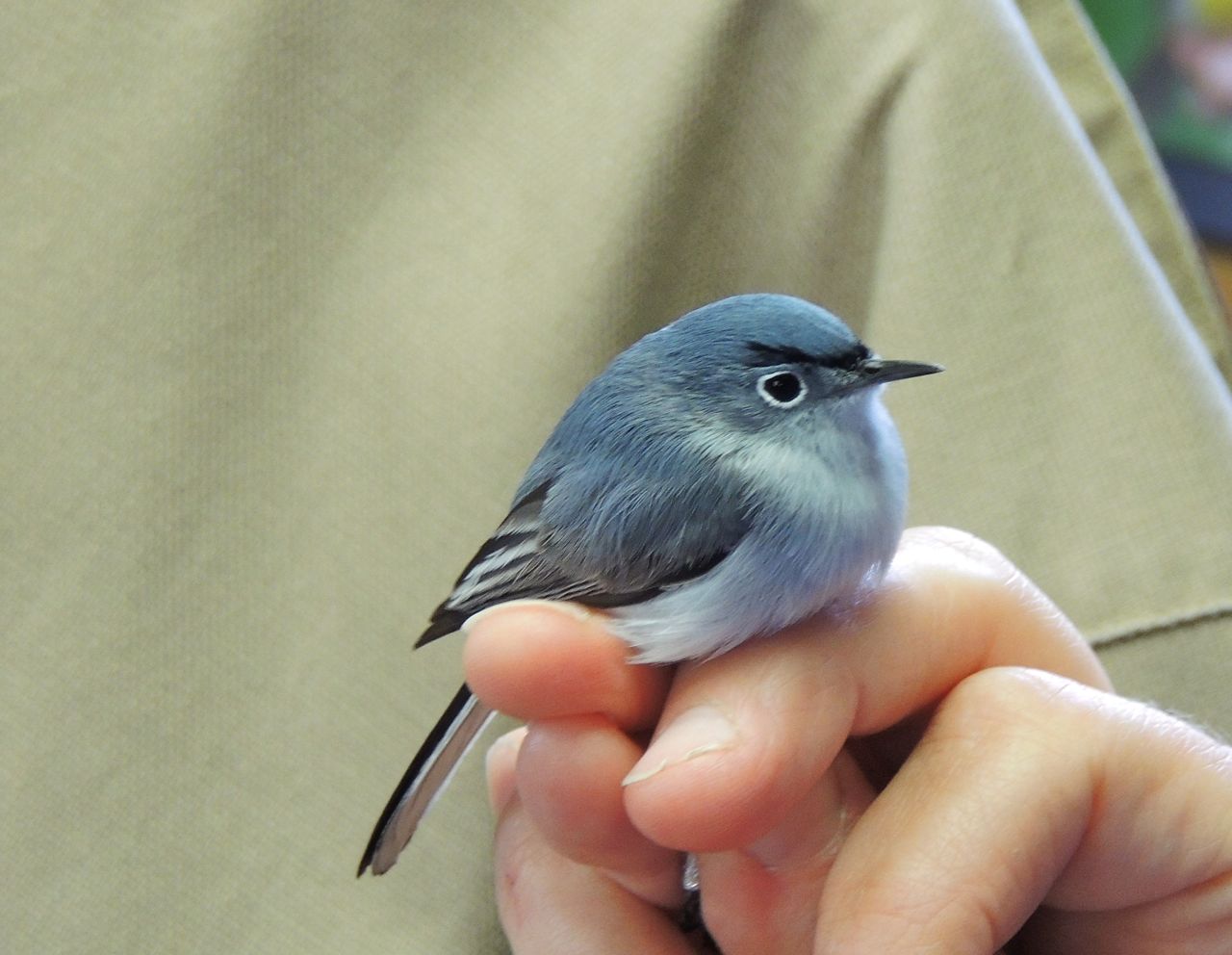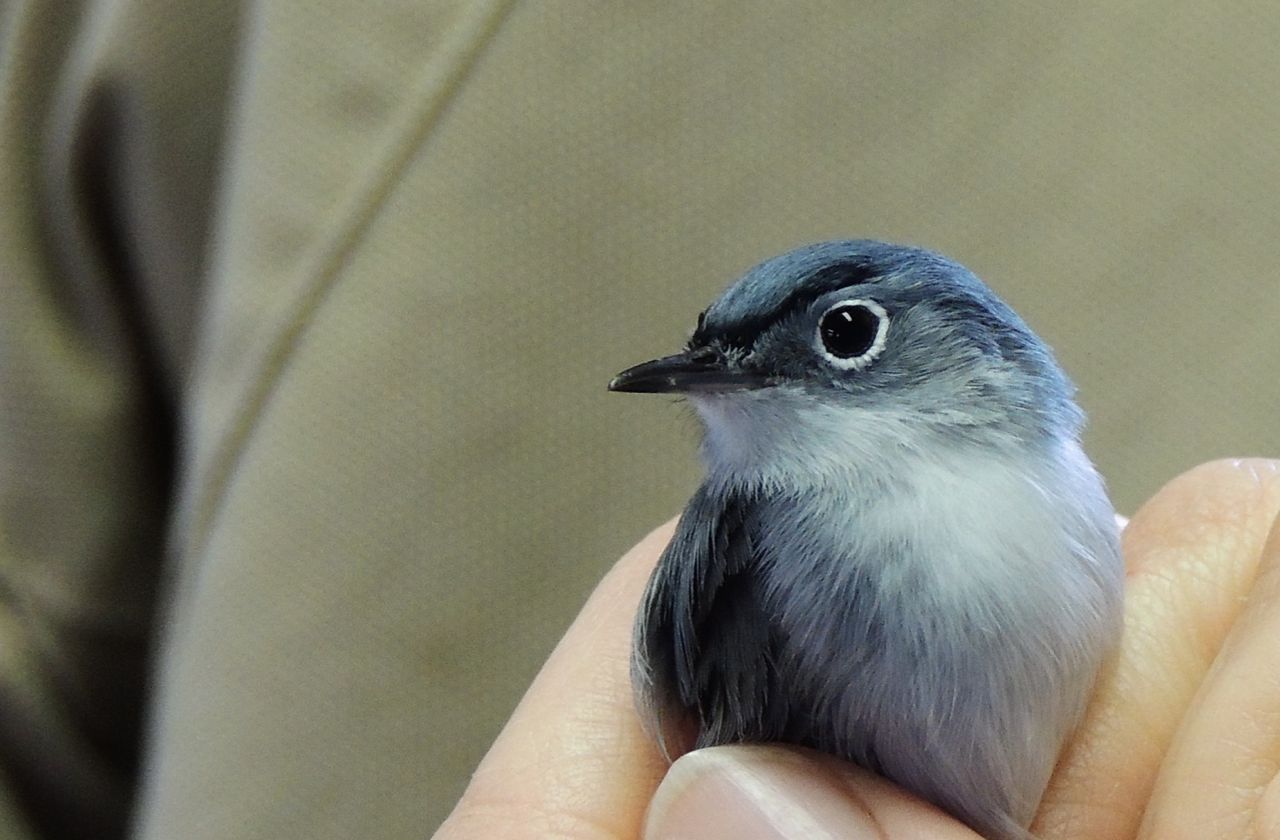14 April 2014. Cayuga ON. I spent the morning at the bird observatory where a blustery south wind kept bird life a little quieter than it might otherwise be. It was probably an average sort of early-April morning, which means that aside from the weather, there were noticeable changes to the bird mix and, for the sharp-eyed, a few early ephemeral woodland plants emerging through the leaf litter.
My census round turned up several interesting sightings. I spotted four Common Loons flying hard against the buffeting winds. Because they’re very light-coloured, almost white below, my first impression was that of Common Mergansers, but Loons are distinctive in flight and I quickly changed my mind. In flight, loons’ necks, heads, legs and feet appear to sag lower than their body, as if a single thread suspends the bird. It’s more of an illusion than reality, probably caused by the contrast between the light underparts and dark upper body and wings. There’s a couple of very nice photos illustrating this here: Common Loon | NorthNW | Lake Erie birding
A flight of perhaps thirty Bonaparte’s Gulls passed by. We sometimes see them in spring when farm fields are flooded (as they are now) where they congregate to feed at the water’s edge. Bonaparte’s Gulls are rather dainty fliers; they’re quite a bit smaller than our familiar Ring-billed Gull (plenty of them around the flooded fields too) and have a black head that makes them look rather classy. The Black-headed Gull of Europe and the Laughing Gull of the Atlantic coast have black heads too, it’s a designer touch for gulls. Here’s a bunch of Laughing Gulls, see if you agree.

As the morning was drawing to an end with the first spots of rain spoiling our fun, we started closing the mist nets. It was then that I came across my Bird of the Day, a newly arrived Blue-gray Gnatcatcher, a stylish bird at any time, but this one, a male in breeding plumage, is really chic. On the photos below you can see quite clearly the black forehead/eyebrow line that gives it a rather Latin rakishness I think. It’s just a wee mite of a bird, weighing in at a mere six grams, the same as a kinglet, less than a dollar coin. Blue-gray Gnatcatchers are not common, but they’re not rare either; more unseen and easily overlooked as they seem to favour treetops, particularly near water. An early mentor of mine described them as reminiscent of a miniature mockingbird with the same grayish tones, long tailed proportions and the way they flash their white outer tail feathers. In the hand though, its adjectival name, Blue-gray is very apparent. And they have a real tongue-twister of a scientific name, Polioptila caerulea, apparently constructed from the Greek: polios “gray” and ptilon “feather” ,as the primaries are edged in grey – and Latin caerula “blue” for the blue back. Lots about this bird to enjoy, an easy Bird of the Day.


One of the sweetest memories I brought home from Leslie spit last may was of the blue-gray gnatcatchers. Love your photos too, as my dark line over the eyeliner was not as prominent. Sig
What a cutie!